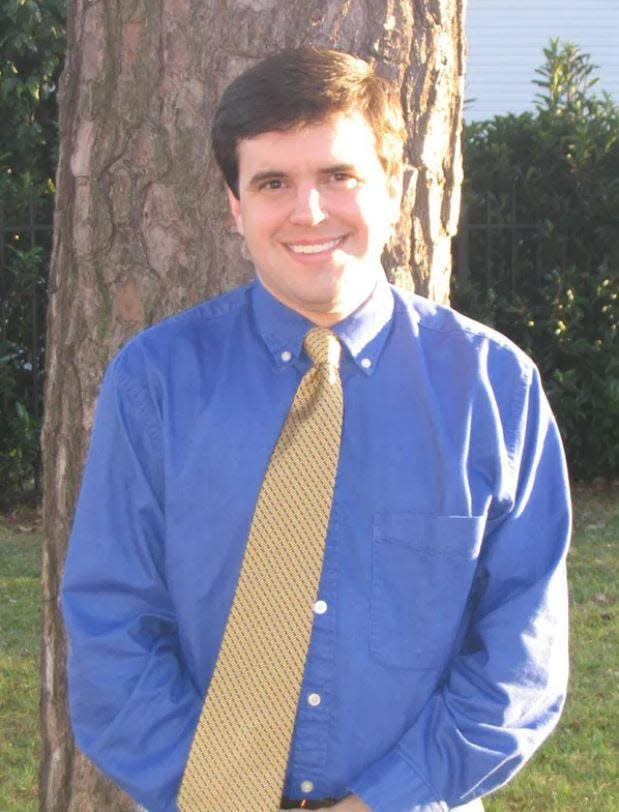Part 2: Texan Sandra Day O’Connor's legacy as Supreme Court justice lives on
- Oops!Something went wrong.Please try again later.
- Oops!Something went wrong.Please try again later.
Sandra Day O’Connor had already made a mark on history by the time she was in her forties. In 1973, the Texas native became the first woman to head a state legislative chamber when she became Senate Majority Leader in the Arizona state senate. On August 19, 1981, the announcement of a woman nominee to the U. S. Supreme Court made headlines around the world in a time when rights for women were advancing across the globe. El Paso native Sandra Day O’Connor would make history again.
Conservatives who had supported Ronald Reagan’s election as president were initially concerned about her record as a moderate in the Arizona legislature. O’Connor, however, calmly won over her critics. In spite of their initial misgivings, her nomination was nevertheless approved by the Senate unanimously on September 21. She was sworn in four days later.

Judicial independence was a recurring theme in her career on the bench. O’Connor did not take an ideological approach. Instead, she looked at each case individually, which often made it difficult to predict how she would decide a question before the court. Throughout her long career, her decisions both thrilled and frustrated both liberals and conservatives. In the end, she earned the respect of Americans across the political spectrum.
She tended to side with conservatives on the bench, including her old friend from Stanford Law School, William Rehnquist, who himself would become chief justice by 1986. O’Connor remarked that she felt a great deal of pressure being the first woman on the court. In the early 1980s, there were still very few women serving as judges, and she knew it would be difficult to name another woman to the court if she faltered and recognized her position as a role model for women looking to careers in the law. She often said, “It’s wonderful to be the first at something, but I don’t want to be the last.”
Though she was still the newest member of the court, she quickly took a leadership role in deciding the culture of the court. Getting people to work together was a skill she brought to the Arizona legislature, and she began a Supreme Court tradition of the justices having lunch together to promote a sense of teamwork.
Questions surrounding religion, firearms, civil rights, and abortion routinely came before the court. In 1983, she ruled with the majority in United States v. Place, declaring that it was not unconstitutional for drug-sniffing dogs to sniff luggage and property in a public place, but it was unconstitutional to hold such luggage until a police dog arrived. In 1986, in Webster v. Reproductive Health Services, four of the conservative justices were ready to overrule the controversial Roe v. Wade decision of 1973 that legalized abortion. O’Connor’s vote in the Pennsylvania case was decisive in which she upheld the Roe decision but allowed limitations to be enacted. She was a skeptic in affirmative action cases before the court, but she often discussed the need for racial equality in education.
As her time on the court continued, she began becoming more of a swing vote on close decisions that divided the court. In 1993, she warmly welcomed Ruth Bader Ginsburg as the second woman on the Supreme Court, and the two developed a respected working relationship though they disagreed on many decisions. As early as 2000, O’Connor began expressing a desire to retire from the court. Her husband’s health was uppermost in her mind as he slowly succumbed to Alzheimer’s Disease.
In Bush v. Gore, she was part of the majority in the controversial decision that ordered the State of Florida to end recounts in the 2000 presidential election, a contest that came down to the results in that state. In the years afterward, she often wondered whether the court should have intervened at all. In 2003, she wrote the decision in Lockyer v. Andrade that upheld California’s “three strikes law” mandating life sentences for individuals convicted of their third felony.
In 2005, she announced her retirement from the court and was succeeded by Justice Samuel Alito. She soon became the chancellor at the College of William and Mary in Virginia. She would still sit in on cases as a visiting judge on occasion. In 2009, President Barak Obama awarded her the Presidential Medal of Freedom in honor of her work on the Supreme Court. In 2009, John O’Connor, her husband of 57 years, died. In 2013, she wrote a book on some of the interesting episodes in the history of the Supreme Court called Out of Order.
In her later years, her brilliant mind began to fade. Alzheimer’s Disease struck and began to take its toll. She began to get more forgetful, and her physical health was declining. In 2018, she announced her retirement from public life, discussing her health issues. She spent her last few years in a nursing home in Phoenix, with her family and friends protecting her privacy and dignity. The nation’s ninety-first Supreme Court justice died quietly in December at age 93.
Ken Bridges is a writer, historian and native Texan. He holds a doctorate from the University of North Texas. Bridges can be reached by email at drkenbridges@gmail.com.
This article originally appeared on Amarillo Globe-News: Part 2: Texan Sandra Day O’Connor's legacy as Supreme Court justice
